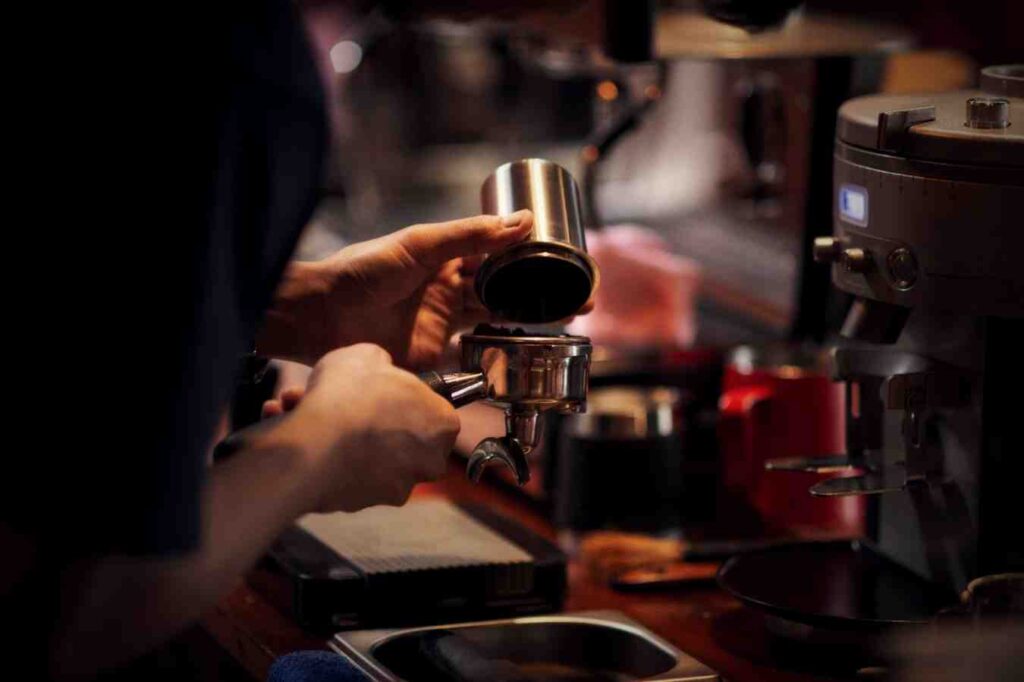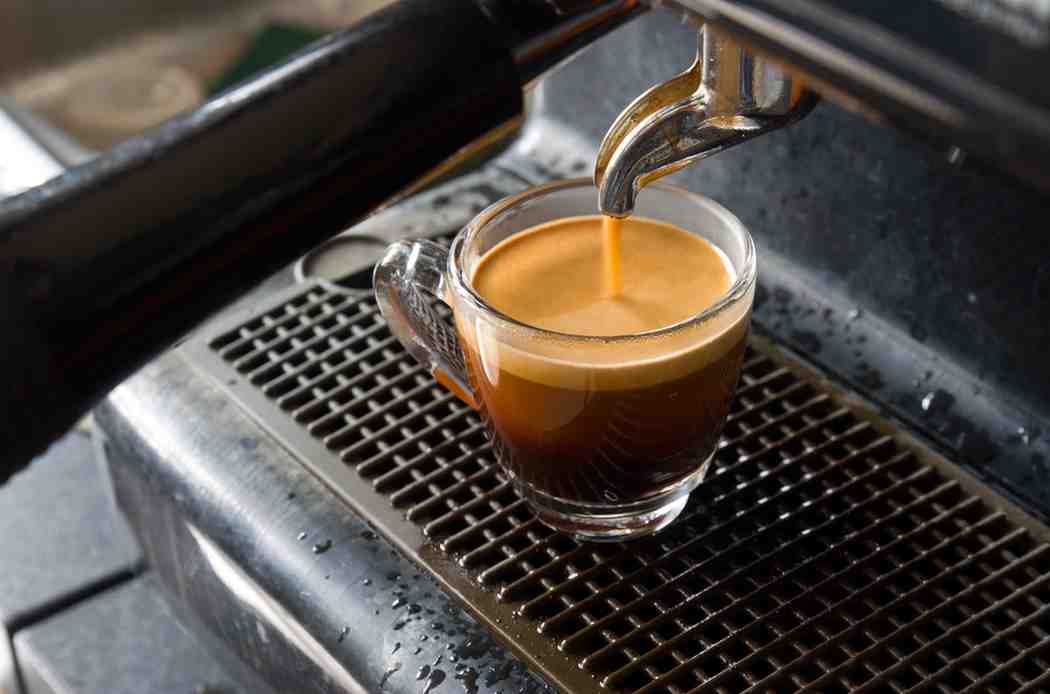Italian espresso is more than just a beverage; it is a cultural ritual, a symbol of tradition, and a cornerstone of Italy’s coffee heritage. Known for its intense flavor and rich crema, Italian espresso has become a beloved drink worldwide. In this guide, you’ll learn what makes it unique, how to brew a perfect shot, and how it differs from other varieties.
What Is an Italian Espresso?
Italian espresso is a concentrated coffee brewed using finely ground coffee beans and hot water under high pressure. It is typically served in small cups and known for its strong, rich flavor.
- Concentrated Flavor: A small shot with a robust taste, created through high-pressure extraction.
- Crema Layer: The golden-brown foam that sits atop a well-made espresso, indicating quality and freshness.
- Quick Brew: The entire brewing process takes around 25-30 seconds, making it a fast yet complex beverage.
In Italy, espresso is more than just a way to wake up. It’s an essential part of daily life. Italians often enjoy a quick shot at their local café, whether in the morning, after meals, or during social gatherings.
What Is the Difference Between Italian Espresso and Regular Espresso?
Although Italian espresso shares the same fundamental brewing principles with regular espresso, several factors set it apart.

Brewing Techniques
- Italian Method: Typically uses traditional manual or semi-automatic machines. Baristas focus on perfecting every detail, from grind size to water pressure.
- Global Variations: Outside Italy, espresso machines may vary. Many focus more on speed and convenience than on the precise, slow extraction process that defines an authentic Italian shot.
Flavor Profile

- Balance and Consistency: Italian espresso emphasizes a balance between bitterness, acidity, and sweetness. Each sip should deliver a smooth, full-bodied flavor.
- Darker Roast: Italian espressos often use a darker roast, giving the coffee a bolder, more intense taste. This roast level pairs well with the creamy texture of the crema.
Crema and Mouthfeel
- Crema Quality: A true Italian espresso has a thick, golden crema that forms naturally during extraction. This adds a smooth mouthfeel and enhances the flavor.
- Mouthfeel: Italian espresso feels velvety and rich, with a lingering finish that stays on the palate longer than lighter styles.
These differences contribute to the unique experience of enjoying espresso in Italy, where every cup is a small masterpiece of flavor.
How to Make a Proper Italian Espresso
Mastering the art of making Italian espresso requires attention to detail. Here’s how to do it right, whether at home or in a café.
Choosing the Right Beans
- Blend Selection: Italian espresso typically uses a blend of Arabica and Robusta beans. The Arabica beans provide sweetness and complexity, while the Robusta adds body and a rich crema.
- Roast Level: Opt for a medium-dark to dark roast to capture the classic Italian espresso flavor.
- Freshness Matters: Use freshly roasted beans for the best aroma and taste. Beans older than two weeks start losing their flavor.
Grind Size and Tamping
- Grind Size: Use a fine grind, similar to table salt. A consistent grind ensures even extraction, which is key for a balanced espresso.
- Tamping: Pack the coffee grounds firmly into the portafilter using an espresso tamper. Apply even pressure, but don’t overdo it—about 30 pounds of pressure works best.
Brewing the Espresso
- Preheat the Machine: Let the espresso machine warm up for about 15 minutes to reach the ideal temperature.
- Measure and Dose: Use 7-9 grams of coffee grounds per shot.
- Extract the Shot: Place the portafilter in the machine and start the extraction. Aim for a flow that resembles warm honey, with the shot pulling for 25-30 seconds.
- Check the Crema: A thick layer of crema should form on top, indicating a well-pulled shot.
Tips for a Perfect Espresso
- Consistent Water Temperature: Keep the water between 90-95°C (195-205°F) for balanced extraction.
- Maintain Machine Cleanliness: Regularly clean the machine and portafilter to prevent stale coffee oils from affecting the taste.
- Practice Makes Perfect: Adjust the grind size and tamping pressure as needed until you find the right balance.
Following these steps ensures a well-rounded, full-bodied espresso that captures the essence of Italian coffee culture.
What Is an Italian Espresso with Milk Called?

Espresso in Italy is often paired with milk to create a range of delicious drinks. Here are the most popular variations:
Macchiato
- Meaning: “Stained” in Italian, a macchiato is a shot of espresso with a small dollop of steamed milk.
- Flavor: Maintains the strength of espresso with just a hint of creaminess.
- When to Drink: Enjoyed as a quick pick-me-up in the afternoon.
Cappuccino
- Composition: Equal parts espresso, steamed milk, and foam.
- Texture: The foam creates a light, airy texture, balancing the strong espresso.
- Italian Tradition: Typically consumed in the morning, often as part of breakfast.

Latte
- Milk Ratio: A larger amount of steamed milk to espresso, resulting in a milder flavor.
- Texture: Creamy with a thin layer of foam on top.
- Enjoyment: Lattes are not as common in Italy as in other countries, but they are popular for those who prefer a softer coffee experience.
Cultural Etiquette
- Italians rarely drink milky coffee drinks like cappuccinos after 11 AM.
- Espresso is the go-to choice for a post-lunch or dinner coffee.
Understanding these variations allows you to enjoy espresso like an Italian, savoring the right drink at the right time.
Why Italian Espresso Stands Out
Italian espresso is known for its attention to detail and tradition. The dedication to quality and the cultural importance of the espresso bar set it apart from other coffee styles.
- Espresso Bars as Community Hubs: Italians often enjoy their espresso standing at a bar, chatting with friends or reading the newspaper. It’s a social experience as much as a caffeine boost.
- Focus on Craftsmanship: Baristas in Italy treat making espresso as an art. From grinding the beans to controlling the water pressure, every step is carefully executed.
- Consistency: Italian espresso remains consistent across the country, with small regional variations that add character without straying from tradition.
These elements make Italian espresso a unique experience that’s deeply rooted in culture and tradition.
Tips for Enjoying Italian Espresso at Home
Making great Italian espresso at home requires the right tools and a bit of practice. Here are some tips to elevate your home brewing game:
- Invest in a Quality Espresso Machine: Look for brands like Gaggia, De’Longhi, or Rancilio, known for their durability and performance.
- Use Freshly Ground Coffee: Pre-ground coffee loses flavor quickly. Invest in a good grinder for optimal freshness.
- Perfect the Pour: Practice adjusting the grind size and tamping pressure to get a consistent pour with a golden crema.
With these tips, you can recreate the authentic Italian espresso experience right in your own kitchen.
The Italian Espresso Experience: Beyond the Brew
Italian espresso is not just about the coffee itself; it’s about the experience that surrounds it. From the bustling espresso bars in Rome to the quiet cafés in Milan, enjoying espresso is a social and cultural ritual that connects people.

The Role of Espresso Bars in Italy
Espresso bars are an integral part of Italian culture. They are places where people gather for a quick coffee, a conversation, or a brief moment of relaxation.
- Stand and Sip: Unlike in many other countries, Italians often enjoy their espresso standing at the bar. This tradition encourages quick interactions and keeps the experience efficient.
- Morning Rituals: Many Italians start their day with a shot of espresso and a pastry. It’s a quick breakfast that fuels their morning.
- Espresso as a Social Connector: In the afternoon or after dinner, friends and colleagues often meet for a quick espresso, making it a perfect way to socialize without lingering too long.
The atmosphere in an Italian espresso bar is vibrant yet relaxed, reflecting the balance between efficiency and enjoyment.
The Art of Espresso Making in Italy
Making a perfect espresso is considered an art form in Italy. Baristas pay close attention to every detail, from the choice of coffee beans to the pressure applied during extraction.
- Barista Craftsmanship: Skilled baristas know how to control the grind size, tamping pressure, and brewing time to achieve the perfect shot.
- Traditional Equipment: Many Italian cafés still use classic manual or semi-automatic espresso machines, allowing baristas to have greater control over each cup.
- Attention to Freshness: Freshly ground coffee and clean equipment are essential. Baristas often grind coffee beans to order, ensuring each shot has maximum aroma and flavor.
The result is a consistent, high-quality espresso that reflects the dedication to tradition and craft.
Espresso and Italian Pastries: The Perfect Pair
Espresso pairs beautifully with a variety of Italian pastries. This combination is especially common in the morning but is also enjoyed throughout the day.
- Cornetto: A sweet Italian pastry similar to a croissant, often filled with jam, cream, or chocolate.
- Biscotti: These crunchy, twice-baked cookies are perfect for dipping into a hot espresso.
- Sfogliatella: A layered pastry filled with ricotta and flavored with citrus, which complements the bitterness of espresso.
These pairings enhance the coffee experience, balancing the rich, intense flavor of espresso with sweet and flaky textures.
Italian Espresso vs. Other Espresso Drinks
While Italian espresso serves as a benchmark for quality, other espresso drinks differ in preparation and flavor. Here’s how Italian espresso compares to its variations.
Italian Espresso vs. American Espresso
- Brewing Method: In Italy, the focus is on a slow, careful extraction process, even if it’s quick. The aim is to extract the full flavor of the beans. In the U.S., faster, automated machines are often used, which can alter the taste.
- Serving Size: Italian espresso is typically served in a small cup, around 1 ounce. American-style espresso shots might be larger, altering the concentration.
- Flavor Intensity: Italian espresso is balanced, with a rich body and a smooth finish. American espresso can vary more in taste, often leaning towards a lighter, more acidic profile.
Espresso vs. Ristretto
A ristretto is a shorter version of an espresso, using the same amount of coffee but less water.
- Concentration: The shorter extraction time results in a more concentrated shot, offering a sweeter, less bitter taste.
- Serving Size: Ristretto is typically half the size of a regular espresso shot, making it even more intense.
- Preference in Italy: While not as common as regular espresso, some Italians enjoy a ristretto for its richer, more concentrated flavor.
Both drinks highlight the same coffee characteristics but offer different experiences in terms of strength and flavor balance.
Why Italian Espresso Stands Out
Italian espresso’s reputation for quality comes from a few key elements that set it apart from other espresso drinks.
- Quality Control: Italian cafés and roasters adhere to strict standards, ensuring that each cup meets high expectations.
- Focus on Tradition: The emphasis on traditional methods keeps the flavors consistent. Even modern espresso machines in Italy aim to replicate the results of older, manual machines.
- Balanced Taste: Italian espresso focuses on achieving harmony between bitterness, sweetness, and acidity. This balance makes it enjoyable without the need for added sugar.
These factors make Italian espresso a timeless choice, appealing to both traditionalists and modern coffee enthusiasts.
Health Benefits of Drinking Italian Espresso
Beyond its rich flavor and cultural significance, Italian espresso also offers several health benefits.
Rich in Antioxidants
- Natural Antioxidants: Espresso contains antioxidants like polyphenols, which help combat oxidative stress in the body.
- Heart Health: Some studies suggest that moderate coffee consumption can support heart health by reducing inflammation and improving circulation.
The concentration of antioxidants is higher in espresso due to its brewing method, making it a potent choice for health-conscious coffee drinkers.
Boosts Mental Focus
- Caffeine Content: A single shot of espresso provides about 60-80 mg of caffeine, enough to boost alertness and concentration.
- Improves Mood: The caffeine in espresso stimulates the release of dopamine, which can enhance mood and provide a natural energy boost.
These effects make espresso a popular choice for those needing a quick mental pick-me-up during a busy day.
Supports Digestive Health
In Italy, espresso is often enjoyed after meals, and there’s a good reason for this.
- Aids Digestion: Espresso can stimulate the production of gastric acids, helping to break down food more efficiently.
- Reduces Bloating: The small serving size and concentrated nature of espresso make it a gentle yet effective digestive aid.
Drinking a shot of espresso after a meal is both a tradition and a practical way to support digestion.
Tips and Tricks for a Perfect Italian Espresso at Home
With the right approach, you can enjoy the rich flavor of Italian espresso from the comfort of your home. Here’s how to get started.
Selecting Fresh Beans
- Buy Whole Beans: Always choose whole beans and grind them just before brewing. This preserves the flavor and aroma.
- Look for Italian Blends: Many Italian roasters offer blends specifically for espresso, balancing Arabica and Robusta beans for optimal flavor.
- Store Properly: Keep your beans in an airtight container in a cool, dark place. Avoid storing them in the refrigerator, as moisture can affect the flavor.
Maintaining Your Espresso Machine
Keeping your machine clean is essential for consistent results.
- Regular Cleaning: Rinse the portafilter and group head after each use to remove coffee oils that can build up over time.
- Descale Periodically: Use a descaling solution every few months to remove mineral deposits that can affect water flow and pressure.
- Check the Gasket: Ensure that the rubber gasket is in good condition. A worn-out gasket can cause leaks and uneven extraction.
These maintenance tips help your machine perform better, resulting in a more delicious espresso every time.
Experimenting with Different Blends
- Arabica vs. Robusta: Try a blend with more Robusta for a stronger crema or go with 100% Arabica for a sweeter, smoother shot.
- Single-Origin Options: Experiment with single-origin beans for unique flavor notes. For example, Ethiopian beans might add fruity hints, while Brazilian beans offer nutty undertones.
- Adjusting the Grind: A finer grind makes a stronger shot, while a coarser grind results in a milder taste. Adjust based on your preference.
Exploring different beans and blends can help you find the flavor profile that matches your taste.
FAQs About Italian Espresso
What Grind Size Should I Use for Italian Espresso?
For the best results, use a fine grind similar to table salt. This allows for optimal extraction, creating a balanced and flavorful shot.
Can I Make Italian Espresso Without a Machine?
Yes, you can use methods like the AeroPress or Moka pot. While they won’t produce the same crema, they can mimic the strong, rich flavor of Italian espresso.
What Does a Perfect Crema Look Like?
A perfect crema is thick and has a golden-brown color. It should cover the entire surface of the espresso and hold for at least a few minutes.
Is Italian Espresso Stronger Than Regular Coffee?
Yes, espresso is more concentrated than regular coffee. However, because it’s served in a smaller quantity, it often contains less overall caffeine per serving.
Why Do Italians Drink Espresso Without Sugar?
In Italy, espresso is appreciated for its balanced flavors. Many Italians prefer to drink it without sugar to fully experience the subtle notes of the coffee.

